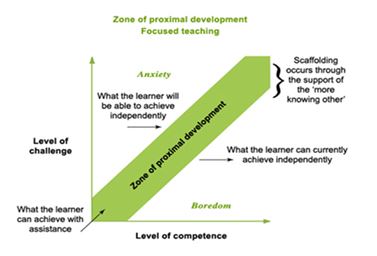 Briony Beaven is an ELT consultant, teacher trainer, materials writer and teacher. She is a NILE Associate Teacher Trainer and teaches Classroom Language to trainee teachers at the Ludwig-Maximilians University, Munich. She joins us to discuss bringing grammar to life in the EFL classroom, part of her Bringing Grammar to Life webinar.
Briony Beaven is an ELT consultant, teacher trainer, materials writer and teacher. She is a NILE Associate Teacher Trainer and teaches Classroom Language to trainee teachers at the Ludwig-Maximilians University, Munich. She joins us to discuss bringing grammar to life in the EFL classroom, part of her Bringing Grammar to Life webinar.
The big problem with teaching grammar
The big problem with grammar, familiar to all English teachers, is that many ways of teaching grammar produce learners who KNOW ABOUT grammar; for example, they can tell you the rules for using the present perfect. But they often don’t KNOW HOW because when they speak or write these supposedly ‘known’ rules do not seem to be operating. In other words, the learners fail to make use of the rule they know so well in the language they actually produce. What can we do about this?
Approaches to grammar teaching
Three main ways of introducing new grammar are the deductive, the inductive and the guided discovery approaches. They all have their advantages and disadvantages and in the webinar we will consider how these might play out in your context.
In deductive grammar teaching the teacher explains or gives the rules for the target language items and then provides practice for the learners. In inductive grammar teaching the teacher provides some examples of the target language in a realistic context and lets the learners ‘notice’ the rules. The third approach, guided discovery, is a modified version of inductive teaching. In this approach the teacher provides some examples of the target language in context and supports the learners in ‘noticing’ the rules.

Support, scaffolding, mediation
To say that you are going to ‘support’ the learners is easy. To provide genuinely useful support needs a bit more thought. In the webinar we will consider the relationship of ‘support’ to Vygotsky’s Zone of Proximal Development and the related concepts of ‘scaffolding’ and ‘mediation’.
In guided discovery grammar teaching we can support, for example, by ensuring that learners meet the new grammar item in a lively, engaging and lifelike context. We can also support them by questioning and monitoring while learners try to ‘notice’ the target rules. What kinds of questions are helpful to ensure learners internalise and can use grammar rules? Good concept questions and focused questions about timelines can work a kind of magic. Finally, in our efforts to support our learners, we need to take care that the rules are summarised by the teacher so that learners know if their suppositions were right or not. That is, we offer feedback, another key component of ‘support’.

Use of the learners’ first language
For a long time we neglected a wonderful resource in the teaching of grammar in a foreign language, namely the learners’ mother tongue.

In their L1 learners have learnt to think, to communicate, to speak and use their voice. They have acquired an intuitive understanding of grammar, become aware of some finer points of language and have acquired the skills of reading and writing. These days a number of experts suggest that if a class is monolingual we can beneficially make use of their first language. What do you think about this?
Practice
Learners can produce new grammar items only after plenty of practice. This practice needs to be engaging and lively, but also challenging and likely to lead to long-term learning. ‘Three times practice’ (Scrivener 2014) is one way to do this.
Well, all in all it seems we need to do more than ‘cover material’ if most of our learners are to ‘know how’ to use the grammar we teach them, not just ‘know about’ it. No one approach will succeed with all of the learners all of the time because different learners understand in different ways. We will need to make use of different approaches and techniques both for introducing new grammar and for practising it effectively.
In my webinar, I suggested engaging ways to help students learn ‘how’ to use grammar to communicate successfully.
References:
Butzkamm, W. 2003. We only learn language once. The role of the mother tongue in FL classrooms: death of a dogma. Language Learning Journal, 28, 29-39.
Scrivener, J. 2014. Demand-high teaching. The European Journal of Applied Linguistics and TEFL, 3(2), 47-58.
Vygotsky, L.S. 1978. Mind in Society: Development of Higher Psychological Processes. Harvard: Harvard University Press.
Wood, D., Bruner, J. and Ross, G. 1976. The Role of Tutoring in Problem Solving. Journal of Journal of Child Psychology and Psychiatry and Allied Disciplines, 17, 89–100.


Reblogged this on hungarywolf.
Can somebody please help me, I participated in the seminar today, Oct 26th and haven’t received my certificate. Who should I contact regarding this issue?
Hi Agne – thanks for attending our webinar. You should receive your certificate of attendance up to one week after attending. If you haven’t received this by November 2nd, please do email us at [email protected]. Thanks! ^Tamira
Thank you so much, I received the certificate:)
Hi Briony…
and then the eternal question for us ELT teachers and all other LTs, is how to produce this in a clinical classroom environment. I have been teaching English and Spanish, both as second languages, for many years, and I tear my hair out on a daily basis attempting to recreate real language experiences within four walls and a whiteboard as a focal point.
Regards. Marie.
Incredible read!